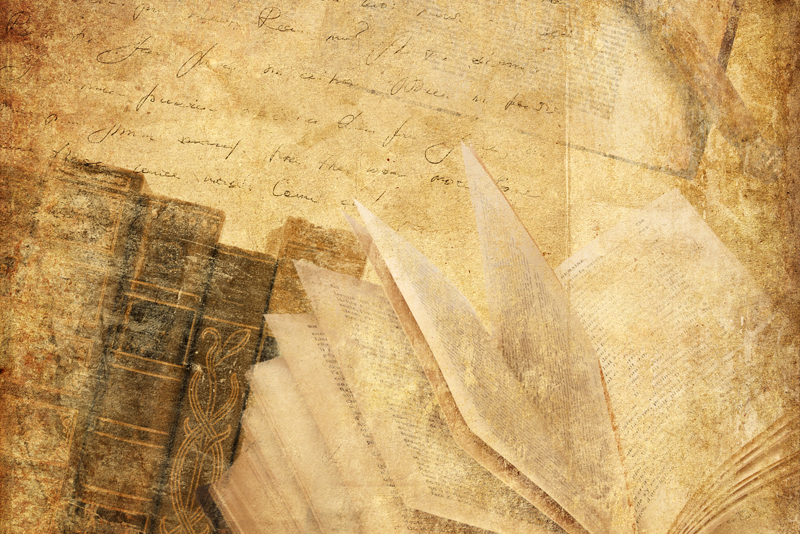Understanding Home Sewing Patterns

The sewing pattern, usually printed on tissue thin paper – Butterick, Simplicity, McCall’s, and Vogue, are just a few of the major pattern company names - instructs on how to assemble, in a step-by-step process, a completed garment or item from a myriad of lines, abstract symbols, cryptic legends, and instructions on fabric cutting layouts, minimally stated sewing information, numbered and named pattern pieces, body and pattern measurements stated in US/English units and metric units, several different pattern view options and so much more.
Like a printed road map with all the lines and symbolic notations representing major and minor roads, highway signs, and boundaries, sewing patterns can be daunting to decipher at first. Nonetheless printed patterns are the sewer's ultimate repository of all things necessary for a sewing road trip.
Home sewing patterns are graded to fit a stepped succession of industry standardized sizes. It was Ebenezer Butterick who first devised the concept of selling a graded home sewing pattern in 1863 by promoting hand-drawn patterns for mens and boys clothing; womens clothing patterns came a few years later. The graded size systems came from the Victorian tailors of the time. Today’s patterns are graded for sizes by computer using apparel industry specifics.
Today’s patterns state a suggested sewing skill level (beginner, intermediate, or advanced) or degree of presumed difficulty (supper easy, easy, moderate, complex) for the sewer somewhere on the pattern envelope. Beginning sewing projects are usually quick and easy, intermediate sewing projects require an increased understanding of basic sewing skills, and advanced requires sewing experience and knowledge of many sewing techniques. Each increasing level of difficulty provides more challenges and complexity than the level before. A pattern labeled Designer Original may be the most challenging of all to sew.
The front of the pattern envelope normally contains a color photo or artistically drawn illustration of the finished item, presented in several views or pattern alternatives. The pattern company name and pattern or design style number is prominently visible at top of the pattern or along the side of the pattern. The included printed patterns are usually offered in a range of multi-sizes. Some garment patterns include all graded sizes. These multi-sized patterns have the pattern’s cutting lines for each section nestled largest to smallest. Multi-sized patterns offer the greatest options for the sewer.
The pattern envelope back contains the measurement chart showing the amount of fabric you’ll need according to your body measurements. Yardage information for fabric, lining, interfacing, and notions (thread, buttons, zippers, etc.) as well as suggested fabric types. Other information that may be found on the back includes back views showing details when finished, number of pattern pieces, and finished garment measurements. Alert notes are on the pattern back, for example essential fabric type warnings such as "unsuitable for stripes or obvious diagonals."
Inside the pattern envelope are the folded printed tissue pattern sections, essentially your printed road map as well as the step-by-step written instructions (like driving directions). The instructions always include basic numbered sketches that applies to each pattern section illustrating each step.
It is important to read through all the written instructions before beginning to layout your pattern onto your fabric to minimize any errors in cutting the fabric and to anticipate the necessary sewing tasks.
General sewing instructions such as explanations for pattern markings, how to shorten or lengthen, cutting layouts and transferring pattern markings and expected seam allowance (usually 5/8-inches) along with helpful tips, are printed on the first page of the instructions.
Careful attention to the cutting layouts for each garment view is important. There will be a key or legend in the fabric cutting layout section of the instructions to indicate the 'right' and 'wrong' side of each pattern section (right side of the pattern section has the printed words on the pattern piece facing up). The right and wrong side of the fabric is always shown (right side of the fabric will face outside and wrong side of the fabric is the fabric side to face into the body.
Additional symbols on the pattern will indicate adjustment lines where you can lengthen or shorten the pattern as well as button placement, sometimes stitching lines, line-up marks, dart placement, and grainline direction (line drawn to indicate pattern section to be placed parallel to the selvage edge). Follow the written instructions in order for best results.
Lastly, consider that all commercially sold patterns have a copyright statement usually indicating: All Rights Reserved. Sold For Individual Home Use Only And Not For Commercial Or Manufacturing Purposes.
Sew happy, sew inspired.
Like a printed road map with all the lines and symbolic notations representing major and minor roads, highway signs, and boundaries, sewing patterns can be daunting to decipher at first. Nonetheless printed patterns are the sewer's ultimate repository of all things necessary for a sewing road trip.
Home sewing patterns are graded to fit a stepped succession of industry standardized sizes. It was Ebenezer Butterick who first devised the concept of selling a graded home sewing pattern in 1863 by promoting hand-drawn patterns for mens and boys clothing; womens clothing patterns came a few years later. The graded size systems came from the Victorian tailors of the time. Today’s patterns are graded for sizes by computer using apparel industry specifics.
Today’s patterns state a suggested sewing skill level (beginner, intermediate, or advanced) or degree of presumed difficulty (supper easy, easy, moderate, complex) for the sewer somewhere on the pattern envelope. Beginning sewing projects are usually quick and easy, intermediate sewing projects require an increased understanding of basic sewing skills, and advanced requires sewing experience and knowledge of many sewing techniques. Each increasing level of difficulty provides more challenges and complexity than the level before. A pattern labeled Designer Original may be the most challenging of all to sew.
The front of the pattern envelope normally contains a color photo or artistically drawn illustration of the finished item, presented in several views or pattern alternatives. The pattern company name and pattern or design style number is prominently visible at top of the pattern or along the side of the pattern. The included printed patterns are usually offered in a range of multi-sizes. Some garment patterns include all graded sizes. These multi-sized patterns have the pattern’s cutting lines for each section nestled largest to smallest. Multi-sized patterns offer the greatest options for the sewer.
The pattern envelope back contains the measurement chart showing the amount of fabric you’ll need according to your body measurements. Yardage information for fabric, lining, interfacing, and notions (thread, buttons, zippers, etc.) as well as suggested fabric types. Other information that may be found on the back includes back views showing details when finished, number of pattern pieces, and finished garment measurements. Alert notes are on the pattern back, for example essential fabric type warnings such as "unsuitable for stripes or obvious diagonals."
Inside the pattern envelope are the folded printed tissue pattern sections, essentially your printed road map as well as the step-by-step written instructions (like driving directions). The instructions always include basic numbered sketches that applies to each pattern section illustrating each step.
It is important to read through all the written instructions before beginning to layout your pattern onto your fabric to minimize any errors in cutting the fabric and to anticipate the necessary sewing tasks.
General sewing instructions such as explanations for pattern markings, how to shorten or lengthen, cutting layouts and transferring pattern markings and expected seam allowance (usually 5/8-inches) along with helpful tips, are printed on the first page of the instructions.
Careful attention to the cutting layouts for each garment view is important. There will be a key or legend in the fabric cutting layout section of the instructions to indicate the 'right' and 'wrong' side of each pattern section (right side of the pattern section has the printed words on the pattern piece facing up). The right and wrong side of the fabric is always shown (right side of the fabric will face outside and wrong side of the fabric is the fabric side to face into the body.
Additional symbols on the pattern will indicate adjustment lines where you can lengthen or shorten the pattern as well as button placement, sometimes stitching lines, line-up marks, dart placement, and grainline direction (line drawn to indicate pattern section to be placed parallel to the selvage edge). Follow the written instructions in order for best results.
Lastly, consider that all commercially sold patterns have a copyright statement usually indicating: All Rights Reserved. Sold For Individual Home Use Only And Not For Commercial Or Manufacturing Purposes.
Sew happy, sew inspired.

Related Articles
Editor's Picks Articles
Top Ten Articles
Previous Features
Site Map
Content copyright © 2023 by Cheryl Ellex. All rights reserved.
This content was written by Cheryl Ellex. If you wish to use this content in any manner, you need written permission. Contact Cheryl Ellex for details.







